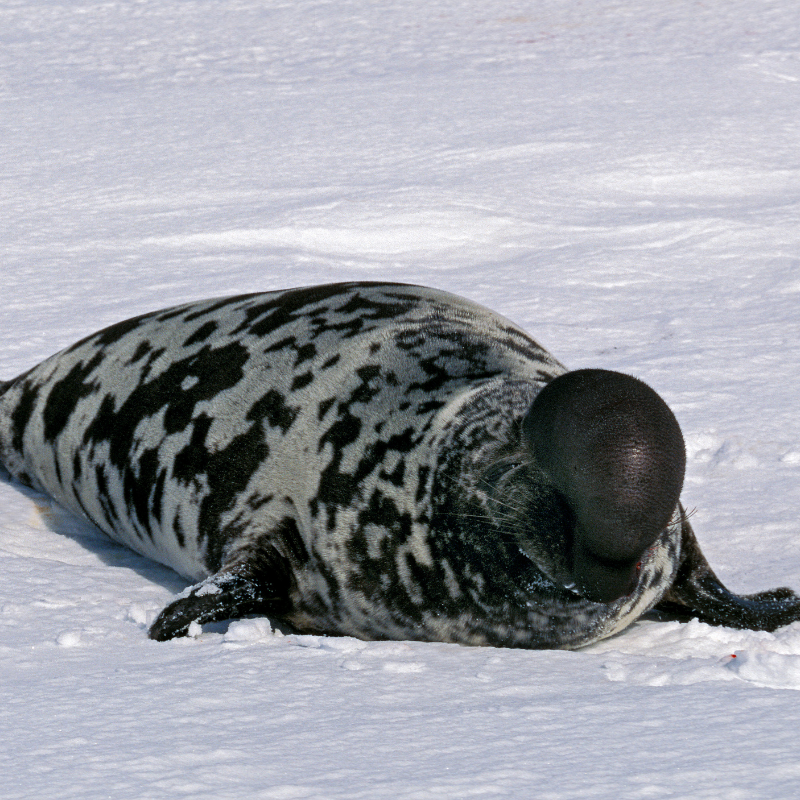Next working day delivery with Royal Mail Tracked 24
Mo Mammals Mo Plankton: Hooded Seals

Mo Mammals Mo Plankton: Hooded Seal
In our regular blog feature, 'More Mammals More Plankton', we explore notable sea mammals, past, present and extinct. Today, we profile the Hooded Seal.
The hooded seal, Cystophora cristata, can inflate a large balloon-like nasal cavity, like a big rubber ball hood over it's head - hence the moniker 'hooded'. The hooded seal has also been known by other, slightly more derogatory and humorous terms owing to it's unusual appearance...
The word Cystophora means "bladder-bearer" in Greek, from the species unusual sexual ornament. The adult male hooded seal has a peculiar inflatable bladder septum on its head.
This bladder hangs between the eyes and down over the upper lip in the deflated state. This is done by shutting one nostril valve and inflating a membrane, which then protrudes from the other nostril.
Found only in the central and western North Atlantic, ranging from Svalbard in the east to the Gulf of St. Lawrence in the west, hooded seals are silver-grey or white in colour, with black spots that vary in size covering most of the body.

Hooded seal pups are known as "blue-backs" because their coats are blue-grey on the back with white bellies. This coat is shed after 14 months of age when the pups moult.
Hooded seals are extremely aggressive, and can grow to more than 8ft (2 and a half metres!) in length and almost half a ton in weight. The diet of the hooded seal is rich in fatty acids, and comprises primarily of crustaceans, krill, and native fish.
Photo credit(s): Female hooded seal, Getty Images









